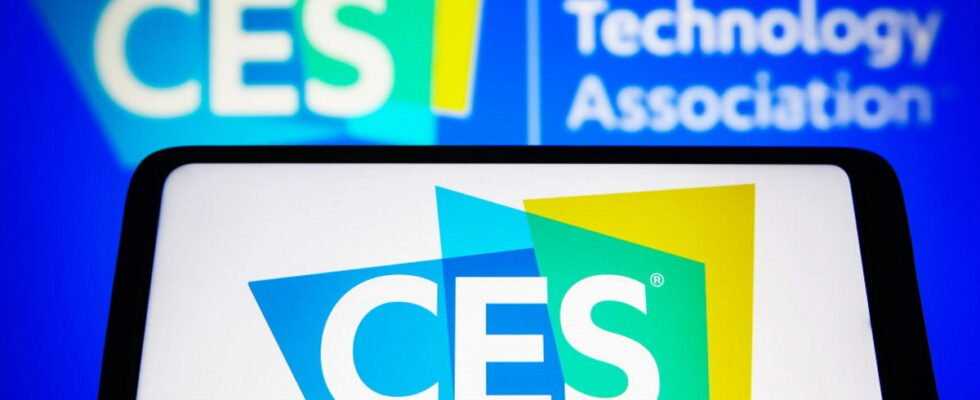Despite the persistence of the Covid pandemic, the Consumer Electronics Show (CES) is taking place this week in Las Vegas and is returning to a live format after a year of hiatus. This live presentation is somewhat ironic in an event where virtual reality, metaverse, autonomous vehicles and NFTs take center stage.
Like it or not, the digitalization of all things physical is fast approaching. While many CES themes may seem unrelated, there is an underlying technology – Artificial Intelligence (AI).
We are rapidly moving into a world where AI is present in almost every aspect of our lives, from the games we play, home electronics, the cars we drive, and more. The technology that powers AI is the graphics processor, also known as GPU, for which Nvidia is by far the market leader and the de facto standard. At CES, the company announced a series of new products to bring AI to more applications. Here is a summary of some of the most interesting announcements from the show.
Nvidia’s Omniverse is now open to everyone
Omniverse is Nvidia’s AI-powered virtual simulation and collaboration platform. This product allows developers to create realistic and precise simulations that obey all the laws of physics. Nvidia uses Omniverse to perform simulations of self-driving cars, robots, and other tasks that can be time consuming and difficult to reproduce. For example, training a robot to walk requires several different scenarios, such as going up hills, down slopes, gravel roads, stairs, etc. It could take months to achieve in the physical world, but Omniverse can load the data quickly into the robot, allowing it to walk immediately.
Several new functions and tools have been added to Omniverse, which has been made available to the creators of GeForce Studio equipped with RTX GPUs. Nvidia designed Omniverse to be the foundation that connects virtual worlds. In its CES keynote, the group announced the following updates:
- Omniverse Nucleus Cloud makes it easy to share Omniverse 3D scenes with just one click, which means artists can collaborate from across the room or the globe without having to transfer huge data sets.
- Support of the Omniverse ecosystem provided by 3D marketplaces and digital asset libraries offers creators an easier way to create scenes. TurboSquid from Shutterstock, CGTrader, Sketchfab, and Twinbru have released thousands of Omniverse-ready assets for creators, all based on the Universal Scene Description (USD) format and residing directly in the Omniverse Launcher. Reallusion’s ActorCore, Daz3D, and E-on software’s PlantCatalog will soon release their own Omniverse-ready resources.
- Machinima Omniverse for Creators RTX now includes new free characters, items and environments from games such as Mechwarrior 5 and Shadow warrior 3, as well as the resources of the Machinima library of Mount & Blade II: Bannerlord and Squad. Creators can remix and recreate their own in-game cutscenes with these assets by dragging and dropping them into their scenes.
- Omniverse Audio2Face, an AI app that instantly animates a 3D face from a single audio track, now supports blendshape and Epic’s direct export to MetaHuman.
Extensive partnerships with AT&T and Samsung
Mobile gaming has always been the ugly duckling of the gaming industry because wireless transmission speeds couldn’t keep up with gaming needs. 5G is the solution to this problem. AT&T and Nvidia are teaming up to bring customers an enhanced experience with a free six-month premium GeForce NOW membership for AT&T customers with 5G devices.
Samsung will make Nvidia’s cloud gaming service available on its connected TVs via the Samsung Gaming Hub later this year. This follows the announcement in November that LG previewed a beta of the service on its WebOS 2021 smart TVs.
These partnerships allow GeForce NOW to be present in trade fairs and on mobile devices. On the gaming front, GeForce NOW continues to expand Electronic Arts catalog support, adding Battlefield 4 and Battlefield 5 to its online library of over 1,100 PC games.
Autonomous Car Updates
This is an area in which Nvidia has been a leader since the concept of self-driving cars came into play. At CES, Nvidia announced Drive Hyperion 8, which brings a number of new capabilities, such as Nvidia Drive systems on a chip. Redundant Orin, 12 surround cameras, nine radars, 12 ultrasound, a forward facing liDAR and three interior cameras. The system is designed to be functionally safe, because if a computer or sensor fails, backups are available.
Electronic vehicle partners include Polestar, backed by Volvo, and electric vehicle companies in China, such as NIO, Xpeng, Li Auto, R Auto and IM Motors. Nvidia also has several robotaxis partners like Cruise, Zoox, and DiDi, and trucking services like Volvo, Navistar, and Plus, all of which use Drive Hyperion. Autonomous trucking company TuSimple announced at CES that it will build its new platform on NVIDIA Drive Orin. It works with delivery companies like UPS, Navistar, and Penske, and its technology has already improved arrival times on long-haul U.S. Postal Service routes.
Much has been said about the current shortage of truck drivers, which has caused many delays in the supply chain for food, consumer goods and technological equipment. Self-driving trucking can alleviate much of the problem and get products back on the road.
Source: ZDNet.com
